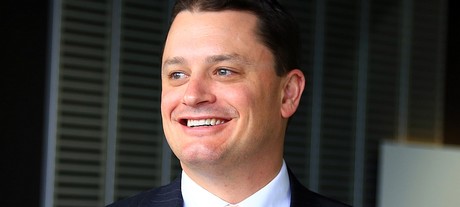Self-service solution can save millions

A ‘citizen self-service’ approach can help Australian governments save millions of dollars per year.
Long gone are the days where governments and citizens interacted on a purely face-to-face basis. Federal and state agencies have modernised hardware and software to better serve the increasing demand amongst citizens for digital services and engagement, while automating internal processes in order to keep costs down and improve organisational efficiency. The South Australian Government, for example, recently invested $20 million in a new statewide electronic case management system. However, there are still others reluctant to update their outdated systems. This poses significant security risks and hinders citizen self-service. In short, people can’t access the services they need online.
Beyond legacy systems
Antiquated computer systems can be a burden to government departments wanting to provide citizens with the services they require. Ignoring legacy modernisation leads to insecure frameworks and libraries, according to Computerworld, and costs governments millions of dollars in maintenance every year.
Digital First, part of the Australian government’s National Digital Economy agenda, hopes to modernise many of the country’s legacy systems. By the end of this year, government agencies will provide citizens with user-friendly access to various digital services, without the need for multiple logins when accessing services across different federal agencies. It is hoped that the initiative will eventually trickle down to the state level too.
One good example of single-platform digital services is myGov, an online portal that provides citizens with access to federal government services online such as Medicare, Centrelink and the ATO. There are now plans to invest $50 million on an overhaul project that will enable mobile optimisation of myGov, allowing citizens to access services directly from smartphones or tablets and providing direct access to individual services from one single login. The suggested changes have been inspired, in part, by OneGov, the NSW Government’s online portal that provides quick access to services such as health care, disability support, health and safety, and charities.
Even the Department of Defence is undergoing digital change. Up to $2 billion has been earmarked for a new enterprise resource planning system — the largest of its kind in Australia — that will incorporate military-enabling services and make it easier for the Department to make decisions.
Still, there are obstacles to this type of digital transformation. Budget constraints might prevent government from investing in the right solutions, for example. In addition, many of the problems associated with legacy systems will remain; unless there is a complete overhaul of legacy IT, infrastructure will still break down, data centres will still overload and software will still lag — directly affecting those citizens who access government services.
Finally, legacy systems often lack security patches and are seldom updated, leading to security vulnerabilities. Data is at great risk of being hacked by a third party, and users might lose trust in the organisation that handles their sensitive information.
The impact of new technology
A number of new technologies are helping the federal government to offer better citizen services. For instance, Energy Safe Victoria (ESV) — a regulator that ensures the safe supply of electricity — now automates many of its operations through customer engagement platform Pegasystems. ESV has an online self-service function that lets users register a profile and manage their own information. The implementation process was overseen by SMS Management & Technology (SMS), which developed a speedy software transition strategy.
Similarly, Public Transport Victoria (PTV) — the statutory authority that manages public transportation — wanted to optimise its services and improve its supporting systems. PTV asked SMS to develop strategies for implementation, which were administered through the Pegasystems platform. SMS has suggested ways for PTV to save money, become less reliant on IT and simplify payment and contract management processes.
New solutions such as these not only save governments money, but optimise efficiency and streamline many of the administrative tasks associated with public service. In fact, legacy modernisation also reduces the workload of government officials, as citizens are able to do things (such as a change of address or a tax return) without being assisted by a public servant.
Unsurprisingly, many government departments are still unable to modernise due to legacy IT. These systems are difficult to manage, are fraught with security problems and cost millions of dollars per year to maintain. Government agencies that want to be more citizen-centric must invest in new technologies that facilitate better decisions and solve problems.
From principles to practice: OECD E‑Leaders 2025 in Sydney and the road to Government 3.0
Why the E‑Leaders moment matters — right now: moving towards Government 3.0.
Keeping pace with APAC's digital ambition
Australian governments need to be careful not to fall behind in the APAC digital race.
Why care is the key for public sector leaders to build better engagement
Today's public sector leaders are facing increasing complex challenges such as burnout,...



